In today's fragmented digital landscape, understanding how customers move from awareness to conversion is more complex than ever. Relying on siloed data from different ad platforms gives you an incomplete, often misleading, picture. This leads directly to wasted ad spend and missed opportunities for growth. True optimization requires seeing the entire customer journey with absolute clarity.
Customer journey analytics tools are the key to unlocking this visibility. They stitch together every touchpoint, from the first ad impression to the final sale and beyond, revealing which channels and campaigns truly drive revenue. This guide moves beyond generic feature lists to provide a deep, practical analysis of the top platforms available today.
We'll break down the 12 best customer journey analytics tools, complete with screenshots, direct links, and honest assessments of their strengths and limitations. Whether you're an e-commerce brand optimizing ad spend or a SaaS company tracking complex user funnels, you'll find the right platform here. Our goal is to help you find the best tool to connect the dots, allocate your budget effectively, and make data-driven decisions with confidence.
Cometly positions itself as a powerhouse among customer journey analytics tools, engineered for marketers who demand absolute clarity on ad spend and ROI. It moves beyond surface-level metrics by unifying every customer touchpoint, from the initial ad click to final CRM conversion events. This creates a cohesive, multi-touch attribution model that reveals which specific campaigns, ad sets, and creative elements are truly driving revenue. Its core strength lies in its ability to de-anonymize the customer path across multiple platforms and devices.
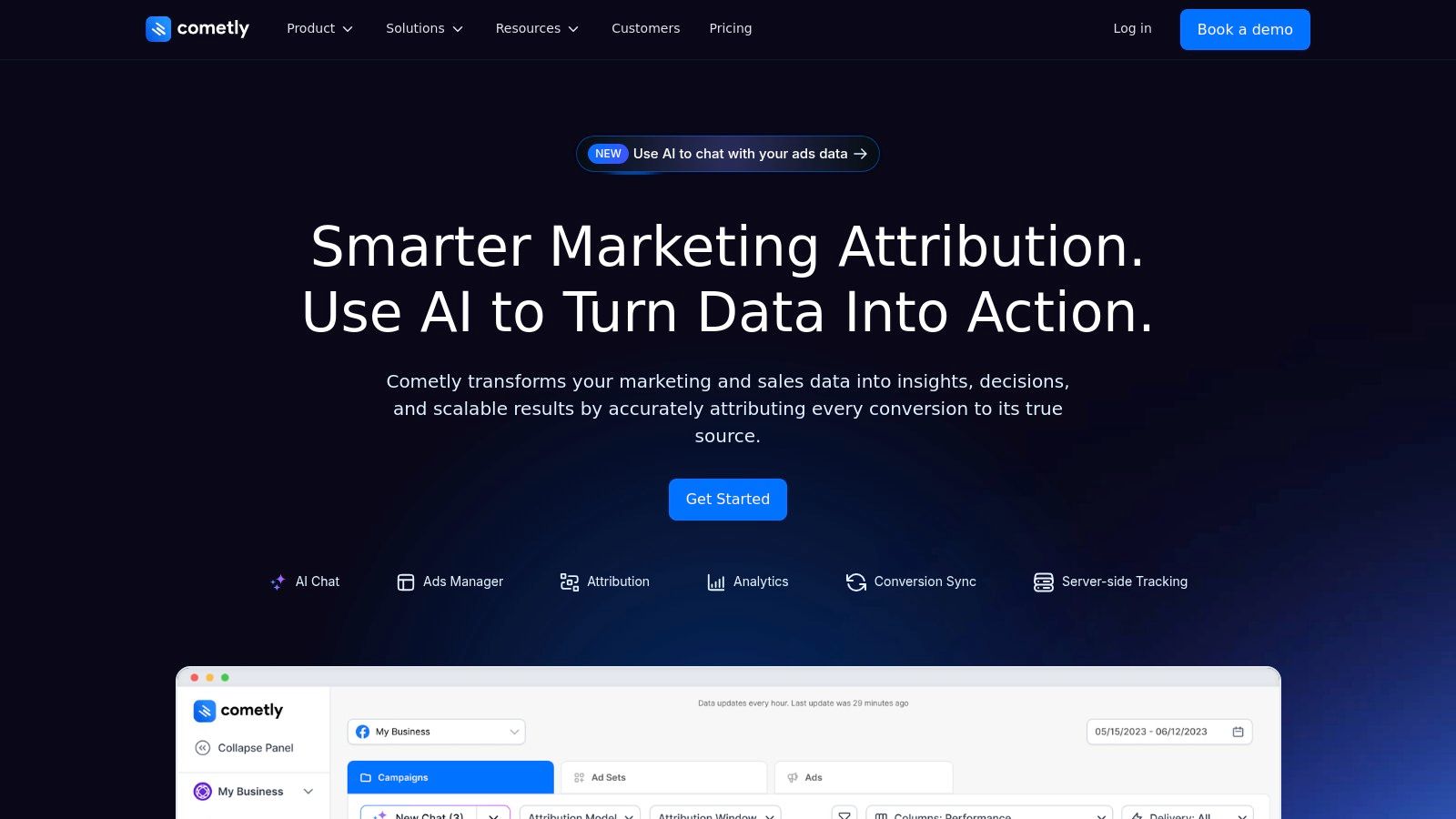
The platform is built for action, not just analysis. Its AI-powered Ads Manager provides actionable recommendations, helping teams optimize ad spend in real time. For e-commerce brands, this could mean reallocating budget from an underperforming Facebook ad to a high-converting Google Shopping campaign instantly. SaaS companies can use it to pinpoint which blog posts or organic channels contribute most to trial sign-ups, informing content strategy.
AspectAssessmentBest ForPerformance marketing teams, e-commerce brands, and agencies focused on maximizing ROI from paid advertising channels like Meta, Google, and TikTok.Ease of UseThe interface is designed to be intuitive, with personalized onboarding to guide new users. However, mastering its advanced AI features may require some time.PricingCustom. Pricing is tailored to business needs, typically based on monthly ad spend, and requires a consultation with their sales team for a specific quote.Customer SupportUsers benefit from dedicated support and personalized onboarding sessions, ensuring a smooth implementation and ongoing success with the platform.
Pros:
Cons:
Website: https://www.cometly.com
Adobe Customer Journey Analytics (CJA) is an enterprise-grade platform designed to unify vast amounts of online and offline data into a single, person-centric view. Built on the Adobe Experience Platform, it excels at stitching together interactions from various channels, devices, and systems. This allows large organizations to move beyond siloed channel metrics and truly visualize end-to-end customer journeys.
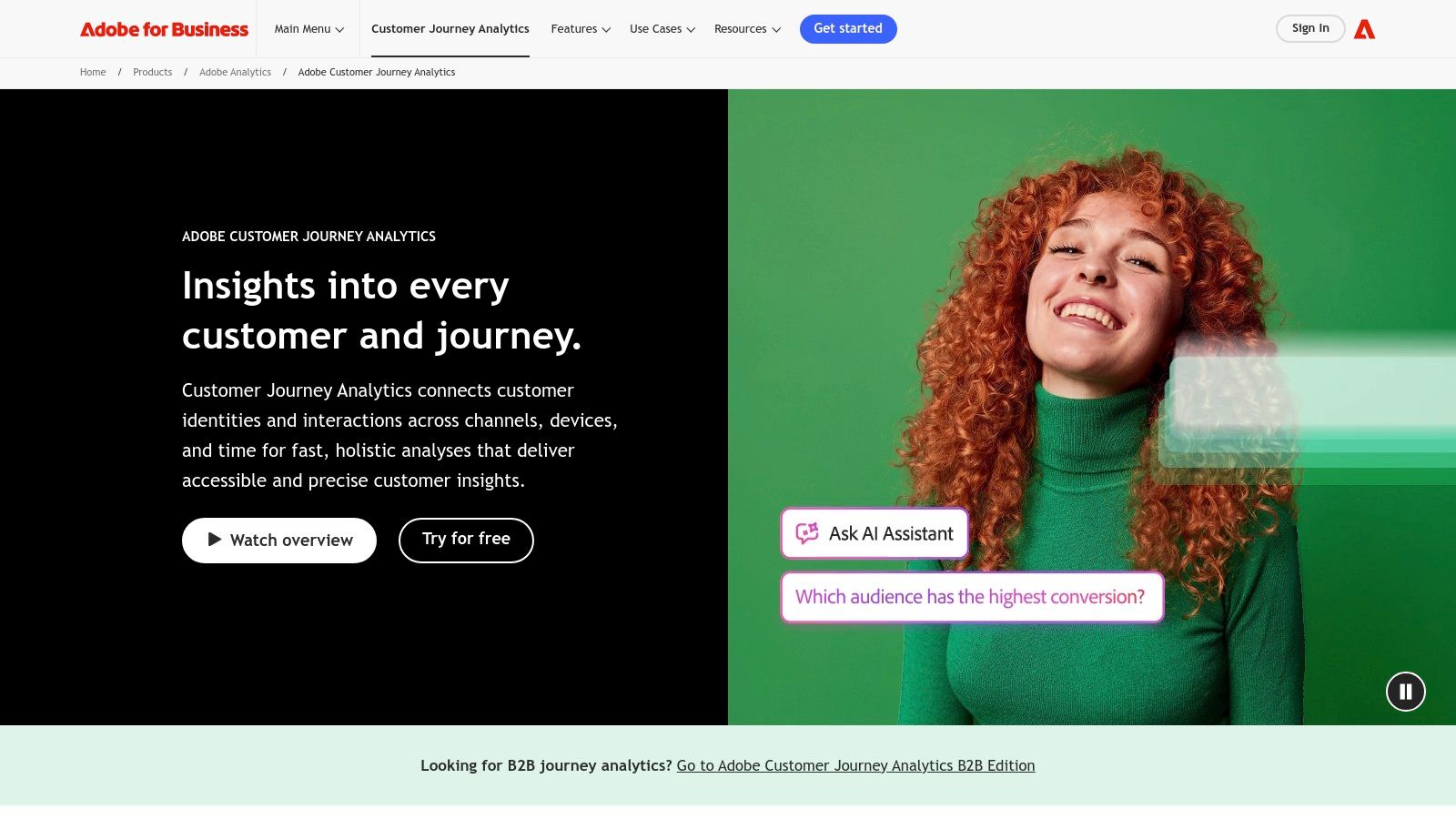
Its core strength lies in its deep, native integration with the Adobe Experience Cloud. Teams already invested in Adobe Analytics, Target, or Marketo Engage will find CJA to be a powerful extension. The platform uses a flexible data model and the drag-and-drop Analysis Workspace, enabling analysts to explore complex datasets and apply AI-driven insights like anomaly detection without extensive coding. As one of the most comprehensive customer journey analytics tools, it’s built for complexity and scale.
Website: https://business.adobe.com/products/customer-journey-analytics/adobe-customer-journey-analytics.html
Amplitude is a self-serve product analytics platform that empowers teams to understand and optimize the complete user journey. It specializes in making complex behavioral data accessible, allowing product, marketing, and engineering teams to quickly uncover insights without relying on data scientists. The platform is known for its intuitive user interface and powerful visualization tools that map user paths, funnels, and retention curves.
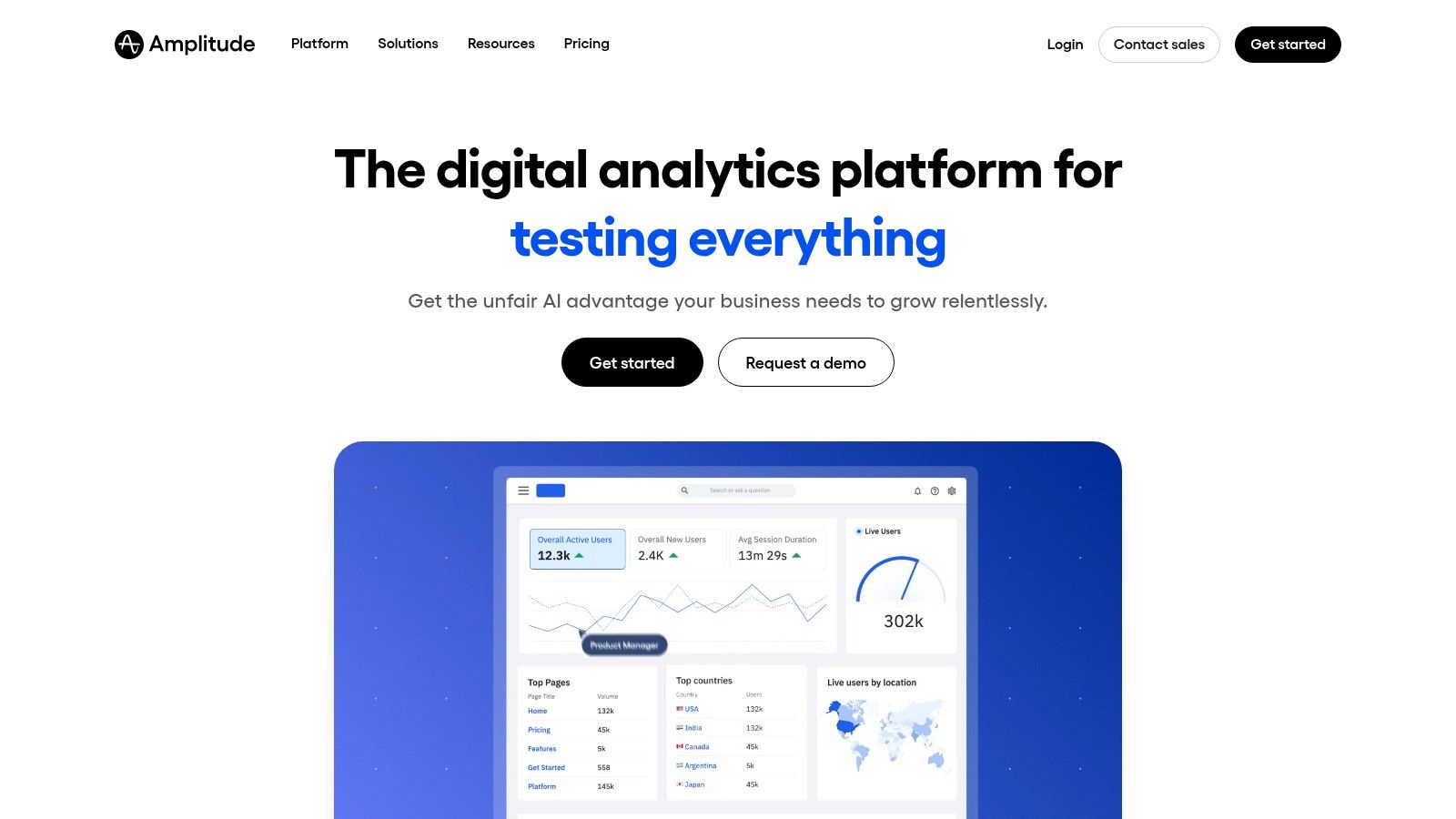
Its core value is democratizing data so teams can answer their own questions about user behavior. With features like integrated session replays, A/B testing, and feature flags, Amplitude connects product decisions directly to user actions. This holistic view makes it one of the most popular customer journey analytics tools for digital-native companies focused on product-led growth. The platform also offers warehouse-native options, allowing analysis directly on a company's data warehouse for maximum flexibility.
Website: https://www.amplitude.com
Mixpanel is a powerful, event-based product analytics platform that provides deep insights into how users interact with digital products. While focused on product analytics, its "Flows" report is a standout feature for visualizing common user paths, identifying friction points, and pinpointing drop-offs in critical funnels. This makes it an invaluable tool for product-led teams who need to quickly understand and optimize user journeys within their app or website.
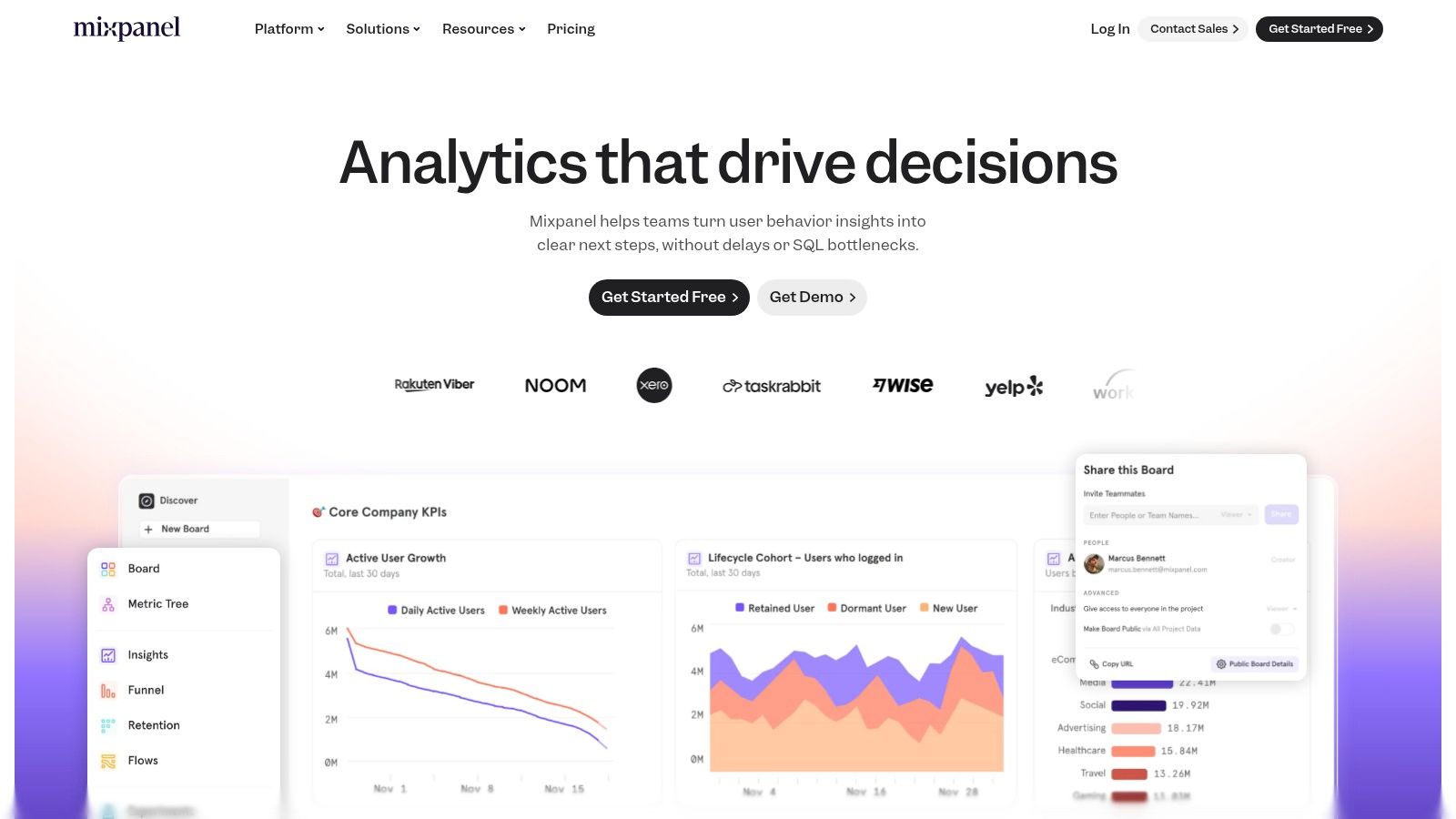
Its core advantage is its user-centric, event-driven model, which allows for granular analysis of specific actions rather than just page views. Product teams can create detailed cohorts, build complex funnels, and use AI-assisted querying to get answers fast. With a generous free tier and transparent, usage-based pricing, Mixpanel is one of the more accessible yet sophisticated customer journey analytics tools for startups and growth-stage companies focused on product engagement and retention.
Website: https://mixpanel.com
Heap is a product analytics platform that distinguishes itself with a unique “autocapture” approach to data collection. Instead of manually tagging every event you want to track, Heap automatically captures all user interactions, such as clicks, taps, swipes, and form submissions. This comprehensive data foundation allows teams to retroactively analyze user behavior without needing to anticipate every question in advance, making it a flexible tool for discovery and ad-hoc analysis.

Its core strength lies in empowering non-technical users to build funnels, paths, and segments on the fly without writing code or waiting for developers. The visual event definition tool and AI-powered insights (Heap Sense) help surface friction points and opportunities in the user journey. As one of the most accessible customer journey analytics tools for initial setup, it’s ideal for teams that need to move fast and analyze historical data without prior planning, providing a complete behavioral dataset from the moment of implementation.
Website: https://www.heap.io
Contentsquare is a digital experience analytics platform that excels at visualizing how users interact with websites and apps. It combines journey analysis with a powerful suite of diagnostic tools, including heatmaps, session replays, and Voice of Customer (VoC) feedback. This approach helps teams, particularly in e-commerce and product management, move beyond quantitative data to see the "why" behind user behavior and identify specific points of friction.
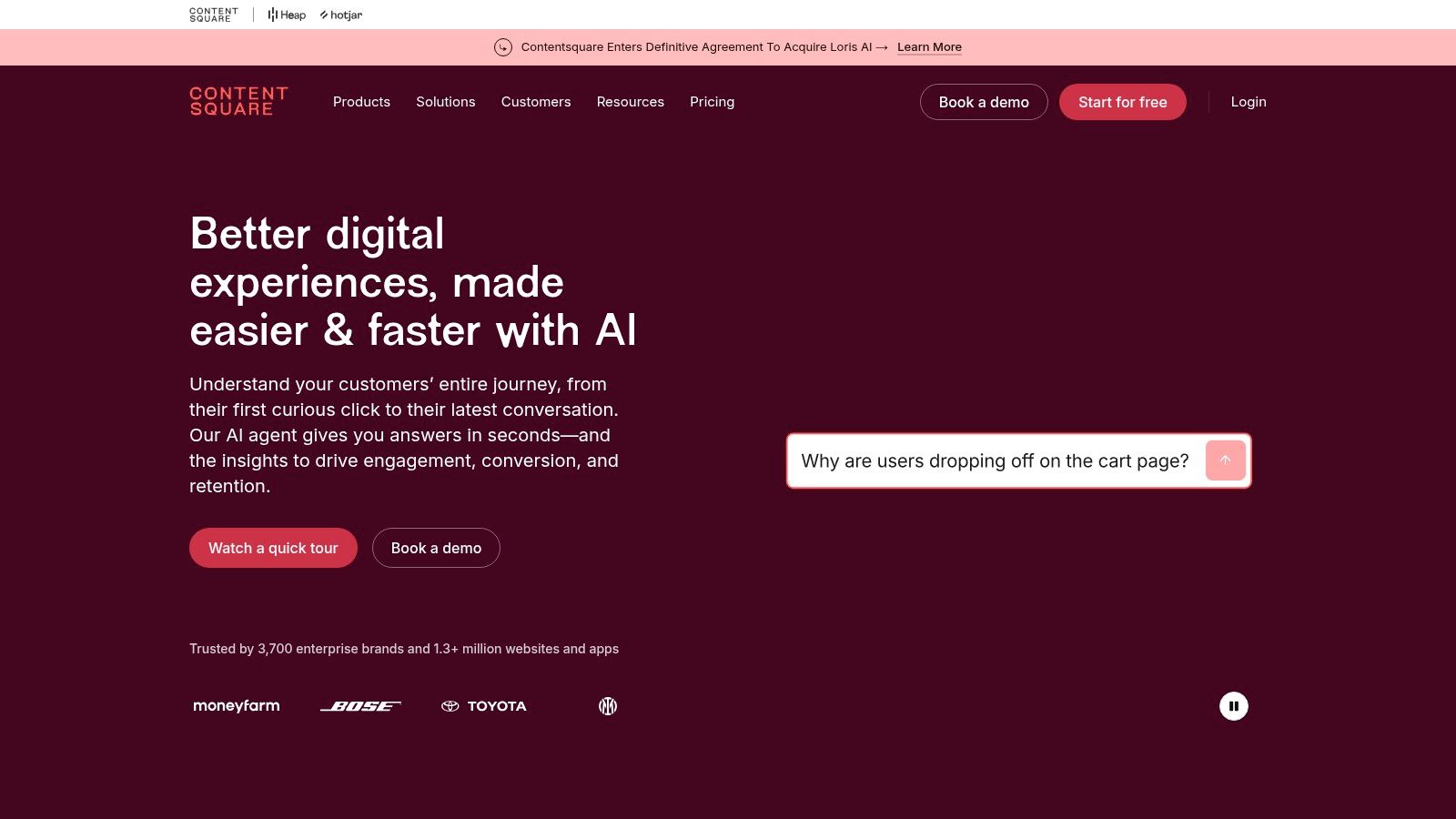
Its core strength is the immediate, visual feedback it provides. Instead of just numbers, Contentsquare shows where users are clicking, struggling, or dropping off with AI-powered insights that highlight revenue-impacting issues. The platform's Journey Analysis feature allows for both forward and reverse pathing, making it one of the most intuitive customer journey analytics tools for uncovering both common paths and the journeys that lead to specific conversion or drop-off events. This rich context is why many organizations pair it with other analytics solutions.
Glassbox offers a powerful digital experience analytics platform that combines automated journey mapping with deep session replay capabilities. It automatically captures 100% of user sessions across web and mobile, providing a comprehensive dataset without the need for manual tagging. The platform then uses AI to surface customer struggles, technical errors, and high-impact conversion opportunities, visually representing them on an augmented journey map.
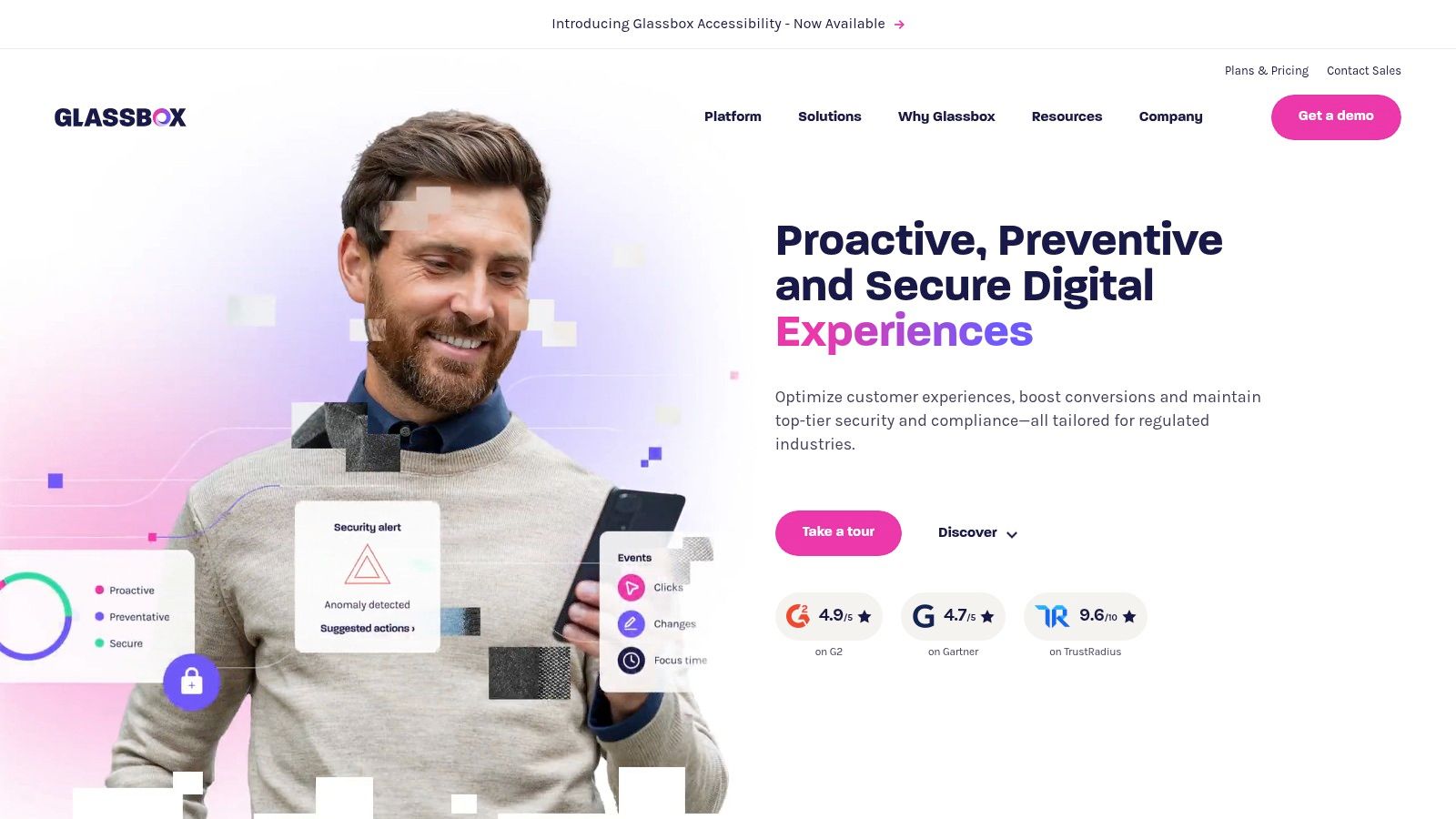
Its key differentiator is the direct link between high-level journey analysis and granular, root-cause diagnostics. When the AI identifies a drop-off point or a user struggle, teams can instantly click into the relevant session replays to see exactly what went wrong. This integration makes Glassbox one of the more actionable customer journey analytics tools for teams focused on immediate UX improvements and revenue impact. The platform quantifies the business impact of each identified issue, helping teams prioritize fixes based on potential revenue gain.
Website: https://www.glassbox.com
FullStory is a behavioral data platform that merges quantitative analytics with industry-leading session replay technology. It allows teams to see exactly how users navigate their digital properties, pinpointing friction points, bugs, and areas of confusion in their journey. This qualitative context provides the "why" behind the numbers, helping product, engineering, and marketing teams validate fixes and optimize user paths with certainty.

Its core value is connecting every user event and path directly to a pixel-perfect session recording. Instead of just seeing where users drop off, you can watch their exact experience to understand the struggle. With AI-powered insights and robust mobile analytics options, FullStory moves beyond simple observation to proactive issue detection. For teams focused on digital experience optimization, it’s one of the most powerful customer journey analytics tools for understanding user behavior at a granular level.
Website: https://www.fullstory.com
Pendo is a product experience platform that combines powerful product analytics with in-app guidance and user feedback tools. It’s designed to help companies understand not just what users do within their software, but also why they do it. By analyzing user paths and workflows, Pendo empowers product, marketing, and customer success teams to improve feature adoption, streamline onboarding, and reduce churn.
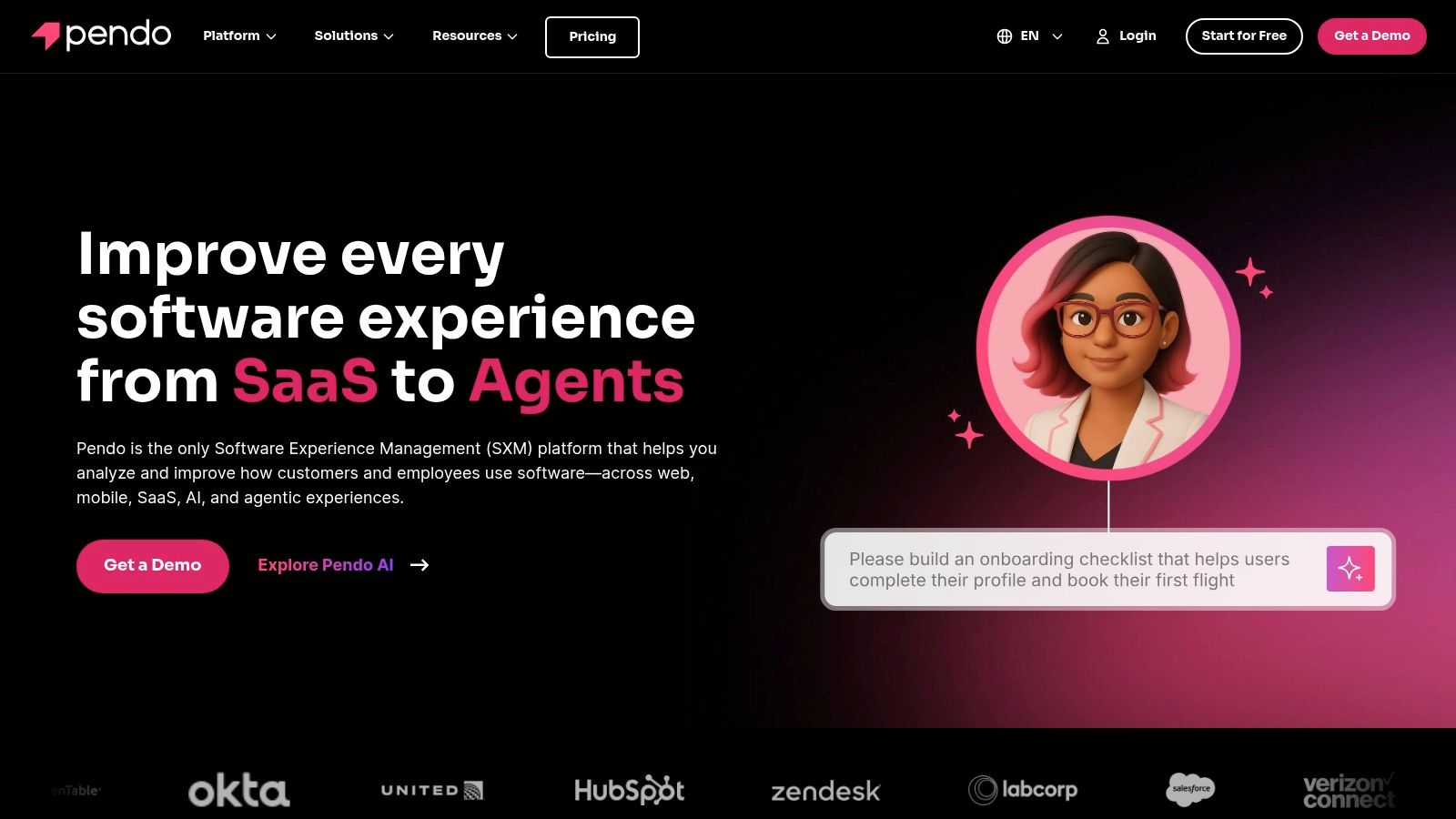
Its strength lies in its ability to close the loop between insight and action. After identifying a friction point in a user journey, teams can immediately deploy an in-app guide, poll, or NPS survey to that specific user segment without writing any code. This integrated approach makes Pendo one of the most effective customer journey analytics tools for SaaS companies focused on product-led growth, as it directly connects analytics to user engagement and sentiment within the application itself.
Website: https://www.pendo.io
Woopra is an end-to-end customer journey analytics platform that focuses on connecting individual user behavior to broader trends like segmentation, retention, and attribution. It is designed to provide real-time insights for SMBs and mid-market teams, enabling them to visualize how users navigate their products and websites. The platform unifies data from multiple touchpoints into cohesive "People Profiles" and dynamic Journey reports.
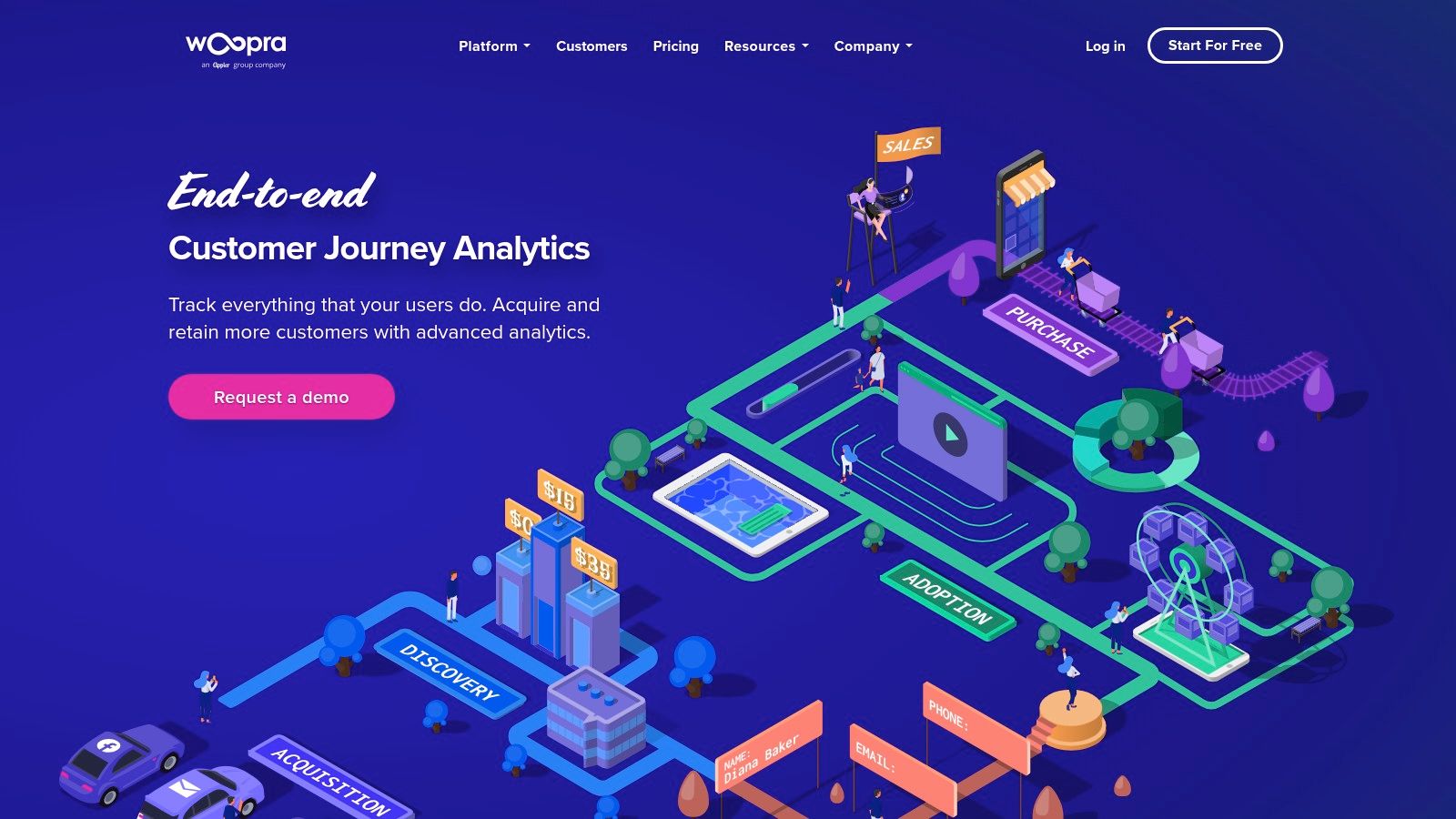
Its core advantage is the combination of analytics with real-time automations. Woopra allows teams to trigger actions in third-party tools (like Salesforce or Mailchimp) based on user behavior, such as sending a targeted email when a user visits the pricing page three times. This makes it one of the more actionable customer journey analytics tools for teams that need to close the loop between insight and engagement. By offering a platform that helps you track customer journey behavior and immediately act on it, Woopra bridges a critical gap for growing businesses.
Website: https://www.woopra.com
Google Analytics 4 (GA4) is the ubiquitous, event-based web analytics service that serves as a foundational layer for many organizations' digital intelligence. While not a dedicated journey orchestration platform, its "Explore" section offers powerful path and funnel exploration reports. These tools allow analysts to visualize the most common user paths, identify drop-off points in key funnels, and understand user behavior flow between different events and pages on a website or app.
Its primary strength is its deep, native integration with the Google Marketing Platform, especially Google Ads. This connection provides crucial insights into how ad-driven traffic navigates a site and contributes to conversions. For deeper analysis, the platform’s free BigQuery export allows teams to query raw event data and build custom journey models. While GA4 is an essential tool, it often serves as a starting point, with many businesses graduating to more specialized customer journey analytics tools for advanced cross-channel analysis.
Website: https://marketingplatform.google.com/analytics
mParticle Analytics, the evolution of the platform formerly known as Indicative, is a journey analytics tool deeply integrated into the mParticle Customer Data Platform (CDP). It is designed for teams that need to connect customer journey insights directly to data infrastructure and marketing activation. The platform allows users to explore complex multipath funnels and customer journeys without needing to write SQL, pulling directly from a unified, real-time customer profile.
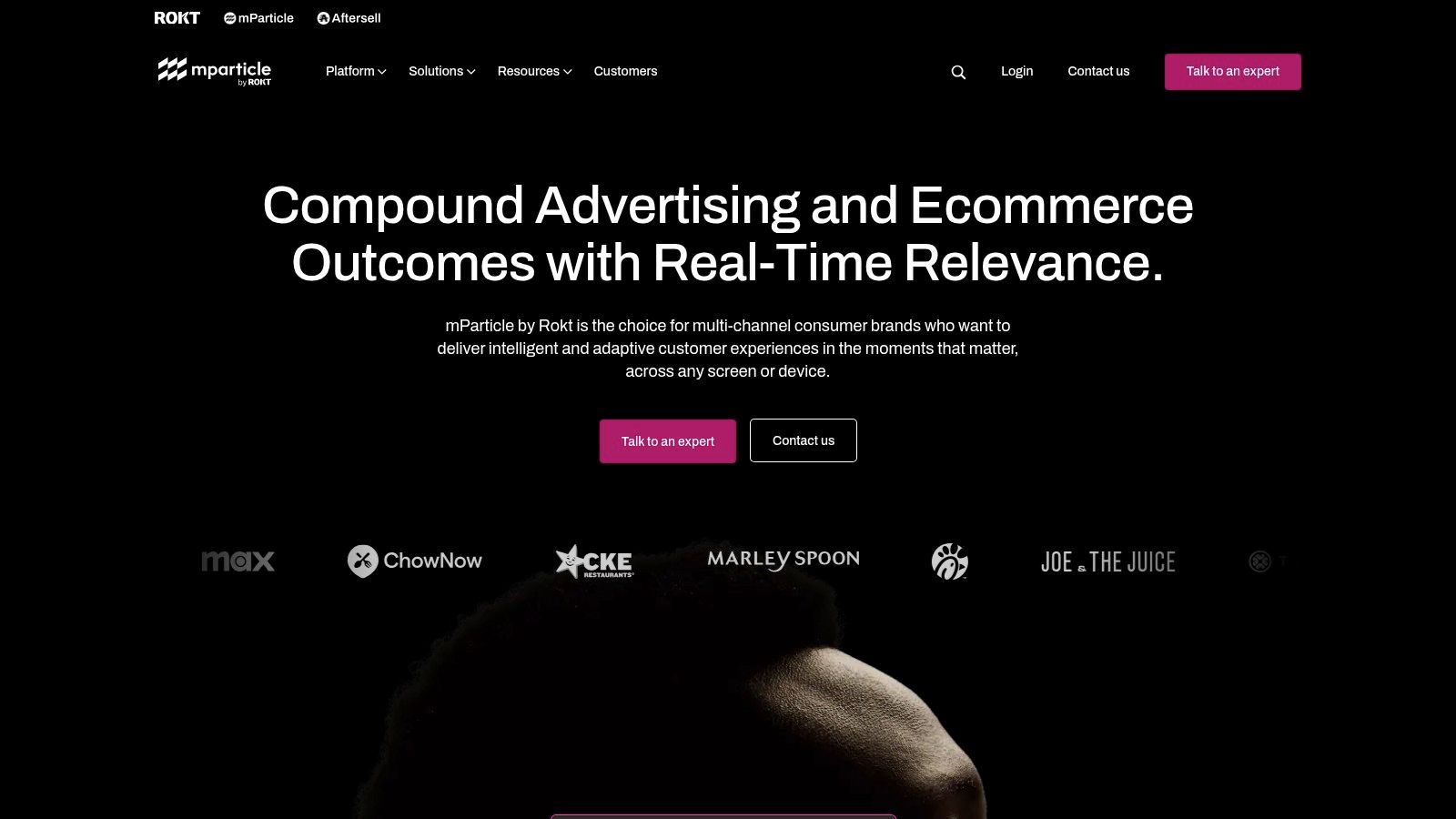
The core advantage of mParticle Analytics is its seamless connection between insight and action. After analyzing a journey, teams can instantly build an audience segment from any touchpoint and orchestrate campaigns across hundreds of destinations. This tight integration makes it one of the more agile customer journey analytics tools for teams that prioritize real-time personalization based on observed customer behavior. B2B SaaS companies, in particular, can benefit from this level of detailed analysis, as explored in this guide on customer journey software.
Website: https://www.mparticle.com
Navigating the landscape of customer journey analytics tools can seem complex, but the path to clarity is more accessible than ever. We've explored a wide spectrum of platforms, from the foundational web analytics of Google Analytics 4 to the deep product-focused insights offered by tools like Amplitude and Mixpanel. We've also seen how digital experience platforms such as Contentsquare and Glassbox provide a visual layer, helping you see your website through your customers' eyes.
The core takeaway is that modern marketing requires more than just tracking clicks and pageviews. True success lies in connecting every single touchpoint, from the first ad impression to the final conversion, into a cohesive and understandable narrative. This unified view is what separates businesses that guess from those that grow with precision. Without it, you're left with siloed data, uncertain ad spend, and missed opportunities to optimize the customer experience.
Selecting the ideal platform from this list depends entirely on your primary business goals. Your decision should be guided by a clear understanding of what you need to achieve.
Once you've chosen a tool, successful implementation is key. Start by defining your "aha!" moments and critical conversion events. Don't try to track everything at once. Instead, focus on the key metrics that align with your business objectives, whether that's sign-ups, purchases, or demo requests. Ensure your team is properly trained on the platform, and create a regular cadence for reviewing the data and translating insights into actionable strategies. The best customer journey analytics tools are not just passive dashboards; they are active catalysts for informed decision-making that drives predictable growth.
Ready to move beyond surface-level metrics and connect every dollar of ad spend to real revenue? Cometly provides the last-touch and multi-touch attribution insights you need to make profitable marketing decisions with confidence. See for yourself how our platform can provide a clear, unified view of your entire customer journey by visiting Cometly to learn more.
Learn how Cometly can help you pinpoint channels driving revenue.
.svg)
Network with the top performance marketers in the industry